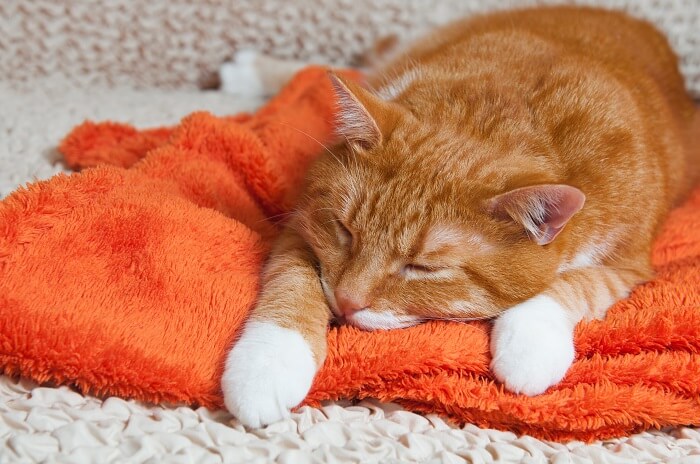
Most people have heard of the risk of carbon monoxide poisoning to humans. But there’s scanty information out there about carbon monoxide poisoning in cats.
The aim of this article is to provide a good-quality, accurate, easily understandable summary of the details about carbon monoxide poisoning, with a particular focus on the risk to cats.
Quick Overview: Carbon Monoxide Poisoning In Cats






About Carbon Monoxide Poisoning in Cats
Carbon monoxide (CO) poisoning develops because of increased concentrations of carbon monoxide in the atmosphere breathed by the cat. CO is an odorless, colorless gas, which makes it impossible to detect without the use of technical equipment.
CO usually accumulates because of incomplete combustion of hydrocarbons in poorly ventilated rooms. In humans, it is known as the “silent killer” because it is so difficult to identify, even when it is happening.
Typically, CO poisoning is caused by faulty heating equipment (boilers, furnaces, propane heaters, gas appliances, other heating systems, water heaters, etc). It can also develop in house fires, as a result of poorly controlled combustion. CO poisoning can be seen in isolation, or in conjunction with other complications such as smoke inhalation and burns.
The mechanism of CO poisoning is the same in pets as in humans. CO has a far greater affinity (over 200 times) for the hemoglobin in the bloodstream compared to oxygen (O2), displacing O2 from blood cells, leading to oxygen starvation in the body’s tissues.
A complex called carb-oxyhemoglobin (COHb) is formed instead of the normal oxyhemoglobin (OHb). The resulting reduction in the oxygen carrying capacity of red blood cells leads to hypoxemia (low oxygen levels in the blood) and tissue hypoxia which causes the signs of illness and, if not addressed death.
CO poisoning is explained in detail on the Centers for Disease Control and Prevention website, as it is a common issue for humans. Cat carers may find it helpful to read this information in detail, as the same broad principles apply to our furry friends as to humans.
Symptoms of Carbon Monoxide Poisoning in Cats
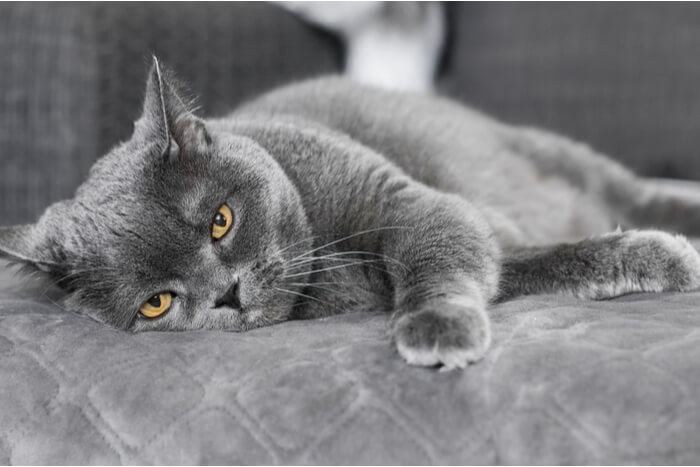
The symptoms of carbon monoxide poisoning in cats are similar to those in humans, but cats have more difficulty showing how they feel. Their symptoms may go unnoticed without careful attention.
In humans, signs of carbon monoxide poisoning start with headaches, nausea, and fatigue, so that people commonly mistakenly believe that they have a viral infection like flu.
Animals cannot explain to their owners that they have these feelings, but owners may notice their animals becoming dull or behaving in a different way to their normal pattern of activity.
As the clinical signs progress and the toxicity develops in full, the two main groups of signs are respiratory and neurological.
- Respiratory signs are essentially caused by the shortage of oxygen in the body’s tissues, resulting in difficulty breathing, rapid breathing, and general distress. The mucous membranes (the gums and tongue are easiest to see) and the skin tend to have a bright pink color, which can help to differentiate this condition from other causes of difficulty breathing, when the mucous membranes may appear bluish or purplish (cyanotic) or pale (anemic).
- Neurological signs can present in different ways, depending on which part of the nervous system is affected. This can vary from deafness, drowsiness and dullness to excitement, agitation, hallucinations, difficulty moving normally, collapse, loss of consciousness, coma, and sometimes seizures. These signs can be delayed in 10 – 30% of affected humans, and it is thought that the same may apply to affected cats.
Diagnosis of Carbon Monoxide Poisoning in Cats
The circumstances will often give rise to a suspicion of carbon monoxide exposure (e.g. cat suffering from smoke inhalation damage to the respiratory system after being rescued from house fire, or cat known to have been in an environment where elevated CO levels are suspected).
For a definitive diagnosis, measurement of carboxyhemoglobin levels in a blood sample needs to be carried out but this is not commonly carried out.
It’s important to note that pulse oximetry, which is the usual way that veterinarians measure the oxygen saturation of tissues, is not accurate in patients with carbon monoxide toxicity.
Most pulse oximeters give a falsely elevated reading because they are unable to differentiate between carboxyhemoglobin and oxyhemoglobin.
To put this into lay persons’ terms, the pulse oximeter acts by measuring the color of the tissues (e.g. a clip-probe is place across the tongue, or on a limb extremity): if an animal is suffering from simple oxygen deprivation, the darker, purplish color of the tissue colors leads to low oxygen readings on the pulse oximeter.
The bright pink color of gums and skin seen in CO poisoning is the reason why a false high level of oxygen occurs.
Your veterinarian may carry out an electrocardiogram (ECG), and although there are no specific changes caused by CO poisoning, there may be abnormalities consistent with this issue, and the procedure may help to rule out other causes of similar signs of illness.
Treatment of Carbon Monoxide Poisoning in Cats
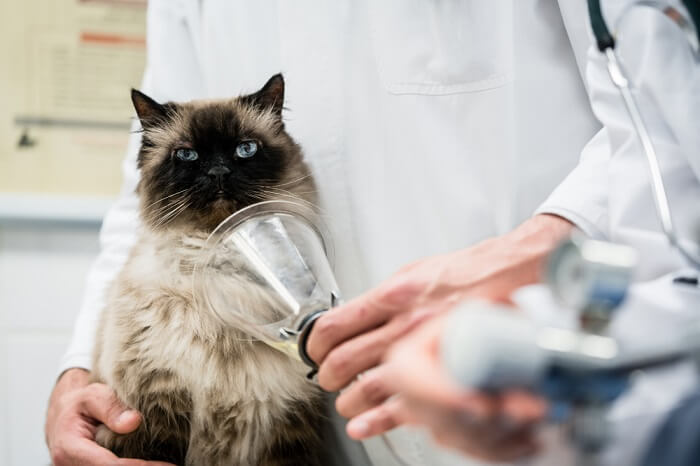
Oxygen therapy is usually able to help cats with carbon monoxide poisoning.
Affected cats usually rapidly improve with oxygen therapy. The half-life of carbon monoxide in the bloodstream is around 5 hours if normal fresh air (21% oxygen) is breathed, 1 hour if an animal breathes 100% oxygen, and just 20 minutes if a cat is subjected to hyperbaric oxygen therapy.
High concentrations of oxygen are generally used for treatment, such as using an oxygen chamber or oxygen tent, or using direct oxygen delivery via face marks or nasal tubes.
Often other issues may need to be simultaneously tackled, such as the direct thermal and chemical damage to the airways that are seen when a cat is suffering from smoke inhalation after a house fire. There may also have been inhalation of other toxic gases if the cat has been exposed to burning materials such as plastics or wool.
There may be inflammation and swelling of the respiratory tract, and the resulting signs may not peak until a full day after the incident.
It’s important to try to identify vulnerable patients in advance: a careful physical examination for signs of exposure to heat and smoke is important (e.g. checking for skin burns, burnt whiskers, soot in the oral cavity).
Prevention of Carbon Monoxide Poisoning in Cat
As with humans, precautionary measures include regular servicing and checking of all equipment that involves combustion (heaters, cookers, etc).
The installation of carbon monoxide detectors is also important, given that the toxic gas is invisible and odorless.
Conclusion
Carbon monoxide poisoning can affect cats just as much as humans, causing similar signs, and the same measures that are used to tackle the problem in humans should equally be applied to cats.
Frequently Asked Questions
What are the symptoms of carbon monoxide poisoning in cats?
The immediate symptoms are respiratory difficulties and altered behavior, ranging from dullness to agitation, and ultimately collapse/coma or seizures.
Can cats die from carbon monoxide?
Just as humans can die from carbon monoxide poisoning, so can cats.
How long does it take to get carbon monoxide poisoning?
Exposure to high levels of carbon monoxide can cause signs of toxicity within minutes but the speed of onset of signs depends on the concentration of gas in the surrounding atmosphere.
How does carbon monoxide affect pets?
Pets are just as vulnerable to carbon monoxide poisoning as humans, and they are affected in the same way. Signs of illness can lead to death if the poisonous gas is not identified and the animal is not removed to a normal, oxygen-rich environment as rapidly as possible.

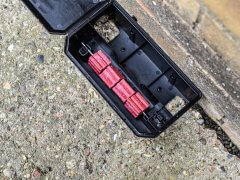

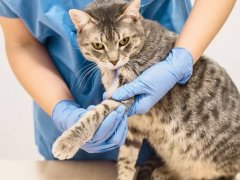

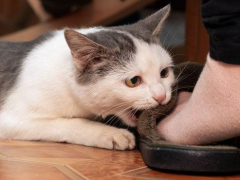
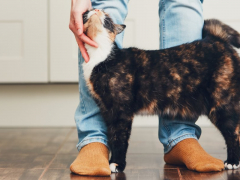

I live in a Condo above the complex garage…the gate opening & Closing I can get use to…the condos were built in the 1970’s…question is there a possibility that carbon monoxide is leaking up from the garage into my unit…the plug in monitor never goes off.
Hi Liz, if your carbon monoxide detector is not indicating anything and you aren’t noticing any issues, it’s most likely that there’s no problem. Most people know not to run their cars inside of a garage, so unless someone in the complex chooses to run their car in the garage, you should be safe. Again, a functioning carbon monoxide detector and other signs of a carbon monoxide leak would let you know if this has happened. You can refer to this guide for more information: https://www.abe.iastate.edu/extension-and-outreach/carbon-monoxide-poisoning-garages-aen-207/